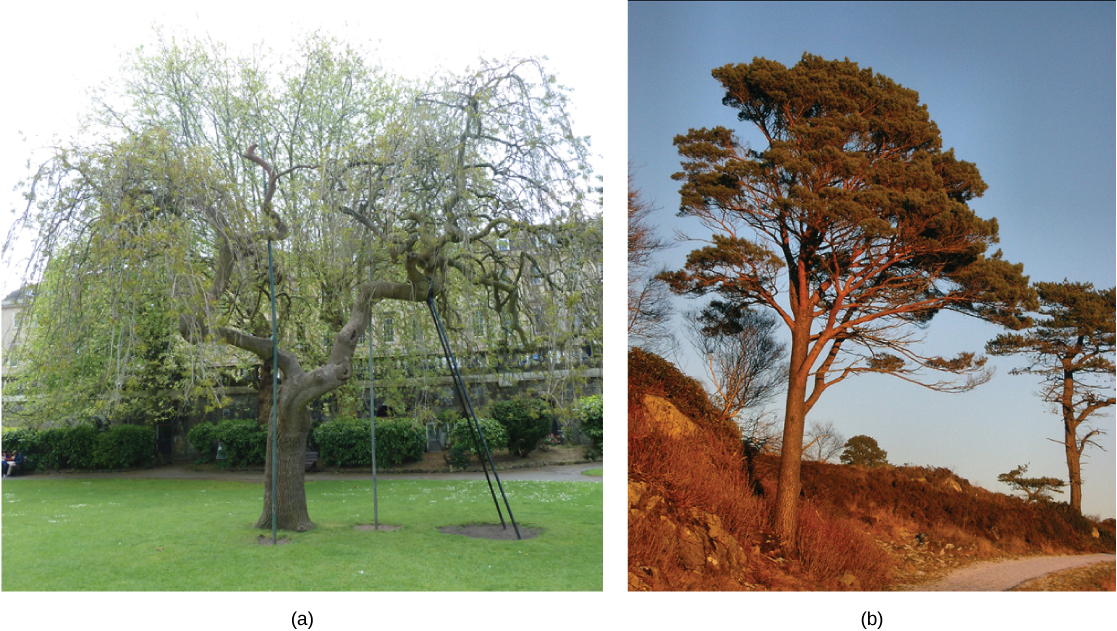| << Chapter < Page | Chapter >> Page > |
Upon landing on the female cone, the tube cell of the pollen forms the pollen tube, through which the generative cell migrates towards the female gametophyte through the micropyle. It takes approximately one year for the pollen tube to grow and migrate towards the female gametophyte. The male gametophyte containing the generative cell splits into two sperm nuclei, one of which fuses with the egg, while the other degenerates. After fertilization of the egg, the diploid zygote is formed, which divides by mitosis to form the embryo. The scales of the cones are closed during development of the seed. The seed is covered by a seed coat, which is derived from the female sporophyte. Seed development takes another one to two years. Once the seed is ready to be dispersed, the bracts of the female cones open to allow the dispersal of seed; no fruit formation takes place because gymnosperm seeds have no covering.
Gymnosperm reproduction differs from that of angiosperms in several ways ( [link] ). In angiosperms, the female gametophyte exists in an enclosed structure—the ovule—which is within the ovary; in gymnosperms, the female gametophyte is present on exposed bracts of the female cone. Double fertilization is a key event in the lifecycle of angiosperms, but is completely absent in gymnosperms. The male and female gametophyte structures are present on separate male and female cones in gymnosperms, whereas in angiosperms, they are a part of the flower. Lastly, wind plays an important role in pollination in gymnosperms because pollen is blown by the wind to land on the female cones. Although many angiosperms are also wind-pollinated, animal pollination is more common.


Visit this website to view an animation of the double fertilization process of angiosperms.
The flower contains the reproductive structures of a plant. All complete flowers contain four whorls: the calyx, corolla, androecium, and gynoecium. The stamens are made up of anthers, in which pollen grains are produced, and a supportive strand called the filament. The pollen contains two cells— a generative cell and a tube cell—and is covered by two layers called the intine and the exine. The carpels, which are the female reproductive structures, consist of the stigma, style, and ovary. The female gametophyte is formed from mitotic divisions of the megaspore, forming an eight-nuclei ovule sac. This is covered by a layer known as the integument. The integument contains an opening called the micropyle, through which the pollen tube enters the embryo sac.
The diploid sporophyte of angiosperms and gymnosperms is the conspicuous and long-lived stage of the life cycle. The sporophytes differentiate specialized reproductive structures called sporangia, which are dedicated to the production of spores. The microsporangium contains microspore mother cells, which divide by meiosis to produce haploid microspores. The microspores develop into male gametophytes that are released as pollen. The megasporangium contains megaspore mother cells, which divide by meiosis to produce haploid megaspores. A megaspore develops into a female gametophyte containing a haploid egg. A new diploid sporophyte is formed when a male gamete from a pollen grain enters the ovule sac and fertilizes this egg.
[link] If the anther is missing, what type of reproductive structure will the flower be unable to produce? What term is used to describe a flower that is normally lacking the androecium? What term describes a flower lacking a gynoecium?
[link] Pollen (or sperm); carpellate; staminate.
[link] An embryo sac is missing the synergids. What specific impact would you expect this to have on fertilization?
[link] B: The pollen tube will form but will not be guided toward the egg.

Notification Switch
Would you like to follow the 'Biology' conversation and receive update notifications?